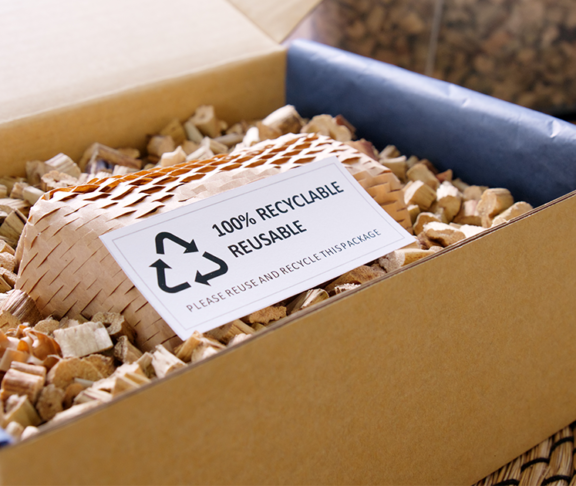
Naomi Stewart
Marketing Manager, Easyfairs
Packaging is often painted as the villain in sustainability narratives. However, through remarkable advances in sustainable materials and designs, it has the potential to be the hero of our planet’s future.
We need to be able to separate genuine, substantive sustainable choices from paper-thin greenwashing claims. As COP 28 begins amidst a global regulatory movement against misleading claims about products and packaging, sustainability language — and the substance (or lack thereof) behind it — is high on the agenda.
What is sustainable packaging?
‘Sustainability’ is a vague term — one that implies a degree of business ethicality and eco-friendliness that does not necessarily match reality.
The answers to these questions created by this vagueness are not always simple and often contradict each other. If a company moves to a locally sourced, recyclable pack but incurs an increase in product waste, is that really the most environmentally friendly move? Is it accurate to market that pack as ‘sustainable’ at all?
It’s easy to talk about innovation.
It’s much harder to make it happen in reality.
Packaging innovation is key
These are existential questions for the industry. As the eyes of the world gaze on the UAE for this year’s COP conference, global legislators will be pressed to help come up with the answers by incentivising innovation.
It’s easy to talk about innovation. It’s much harder to make it happen in reality — to make the often risky investments that are required, to overcome new material sourcing challenges and to shake up key processes that a business has relied on for generations.
Collaboration across the supply chain
Making the data collection changes necessary to substantiate green claims — or to adjust packaging so that it can continue to make the same claims it previously did — may pose short-term challenges. Working towards meeting those challenges today puts businesses in the best place to meet the demands of consumers and lawmakers around the world tomorrow.
By engaging in these difficult discussions in good faith, networking at events, collaborating and innovating where necessary in every tier of the supply chain, the packaging industry can have a huge say in the direction of a truly sustainable future that all stakeholders can contribute to.

